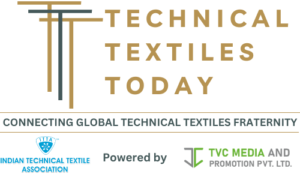| The report “Self-Healing Coatings Market by Form (Extrinsic, Intrinsic), End-use industry (Automotive, Building and construction, Aerospace, Marine) and Region (Asia Pacific, Europe, North America, South America, and MEA) – Global Forecast to 2028″, size was USD 2.4 billion in 2023 and is projected to reach USD 10.4 billion by 2028, at a CAGR of 34.2%, between 2023 and 2028. The self-healing coatings market is divided into five key regions: North America, Europe, Asia Pacific, the Middle East & Africa, and South America. US and Germany, among other nations, are the worldwide leaders in the self-healing coatings industry. Increased investment in many end-use sectors promotes the expansion of self-healing coatings. Emerging economies such as Asia Pacific are funding large-scale infrastructure development projects. The markets of these economies are expanding faster than those of North America and Europe.
Browse
Some of the prominent key players are: · Autonomic Materials, Inc (US) · Covestro AG (Germany) · AkzoNobel N.V. (The Netherlands) · BASF SE (Germany) · Feynlab Inc (US) · GVD Corporation (US) · 3M Company (US) · Shawcor Ltd (Canada) · Winn & Coales (Denso) Ltd (UK) · Revivify Canada, Inc (Canada) Driver: Self-healing coatings are frequently used in the automobile industry due to their ability to repair physical damage or restore functional performance with little or no intervention. The capacity of coatings to self-heal is especially important in the automobile sector, where cars are subjected to extreme climatic conditions and mechanical damage. Self-healing coatings can endure tiny scratches and prevent corrosion, lowering maintenance costs and increasing the life of the coating. Furthermore, self-healing coatings may intelligently adapt to mechanical or chemical damage produced by the external environment and replicate their previous qualities, such as adherence to the substrate and integrity. The application of self-healing nanocoating’s in automobiles can make mobility significantly healthier and increase vehicle performance.
Based on end-use, the automotive segment is anticipated to dominate the market Self-healing coatings have several helpful features and applications in the automotive end-use sector. They improve the structural, thermal, and electrical qualities of the substrate and help to imitate a metallic-like look when replacing chrome-plated painted surfaces. Nanoparticles are used as fillers in self-healing coatings and are mixed into a polymeric matrix. Metallic nanoparticles and nanostructured carbons are the most often employed fillers in conductive self-healing coating compositions today. The type of nanomaterial utilized determines the conductive qualities of these coatings, such as electric conductivity, corrosion inhibition, and scratch resistance. Graphene and zinc are common nanoparticles utilized in such coatings because they have low electrical resistance and self-healing capabilities. The Europe market is projected to contribute the largest share of the self-healing coatings market. In terms of self-healing coatings sales, Europe is the largest market, accounting for 49.1% of the worldwide market in terms of value in 2023. The automotive and marine end-use categories fuel the region’s need for self-healing coatings. Because of the strong efforts of different regulatory agencies to strengthen the structural integrity of car vehicles, the area is at the forefront of the self-healing coatings industry. The financial crisis has had a huge impact on European manufacturing companies, which are currently recuperating, leading to slower demand for self-healing coatings. |
About MarketsandMarkets™
MarketsandMarkets™ has been recently recognized as one of America’s best management consulting firms by Forbes, as per their recent report.
Founded in 2009, MarketsandMarkets recognized uncharted business potentials within disruptive trends, forecasting a surge of $25 trillion in new B2B revenues by 2030. In our 13-year journey, we’ve collaborated with over 10,000 companies, generating $140+ billion in revenue impact. From a market research publisher, we’ve transformed into a growth-enabling leader, backed by a 1500+ strong team
